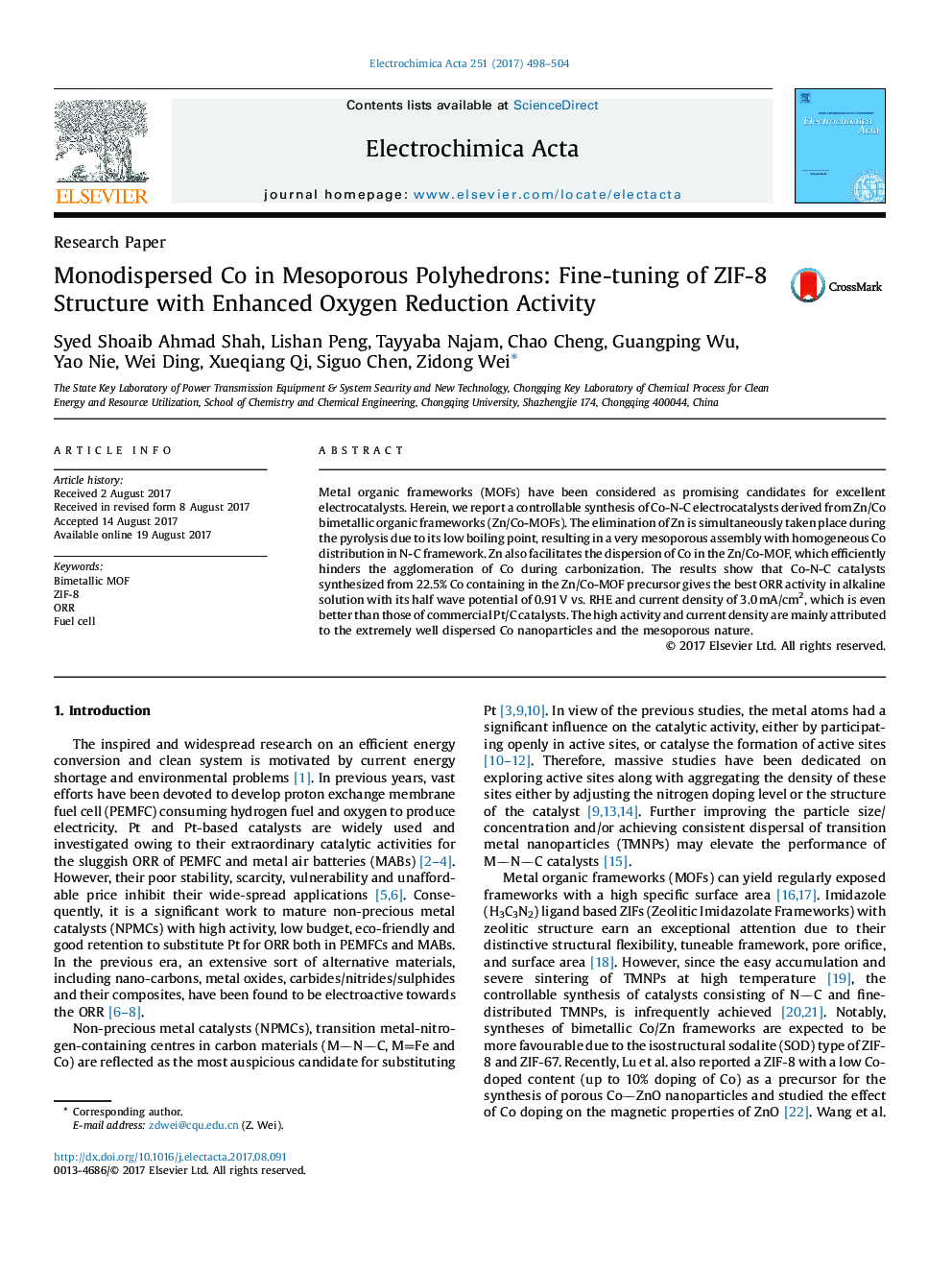| Article ID | Journal | Published Year | Pages | File Type |
|---|---|---|---|---|
| 6469959 | Electrochimica Acta | 2017 | 7 Pages |
â¢The mesoporous structures are well prepared by using Zn in Bi-MOF.â¢Better catalysis for ORR than commercial Pt/C catalysts in alkaline.â¢Efficient and Facile synthetic Method.â¢Atomically dispersed Co nano-particles doped mesoporous carbon.â¢A better strategy to avoid agglomeration of metal while heating at high temperature.
Metal organic frameworks (MOFs) have been considered as promising candidates for excellent electrocatalysts. Herein, we report a controllable synthesis of Co-N-C electrocatalysts derived from Zn/Co bimetallic organic frameworks (Zn/Co-MOFs). The elimination of Zn is simultaneously taken place during the pyrolysis due to its low boiling point, resulting in a very mesoporous assembly with homogeneous Co distribution in N-C framework. Zn also facilitates the dispersion of Co in the Zn/Co-MOF, which efficiently hinders the agglomeration of Co during carbonization. The results show that Co-N-C catalysts synthesized from 22.5% Co containing in the Zn/Co-MOF precursor gives the best ORR activity in alkaline solution with its half wave potential of 0.91Â V vs. RHE and current density of 3.0Â mA/cm2, which is even better than those of commercial Pt/C catalysts. The high activity and current density are mainly attributed to the extremely well dispersed Co nanoparticles and the mesoporous nature.
Graphical abstractDownload high-res image (153KB)Download full-size image
